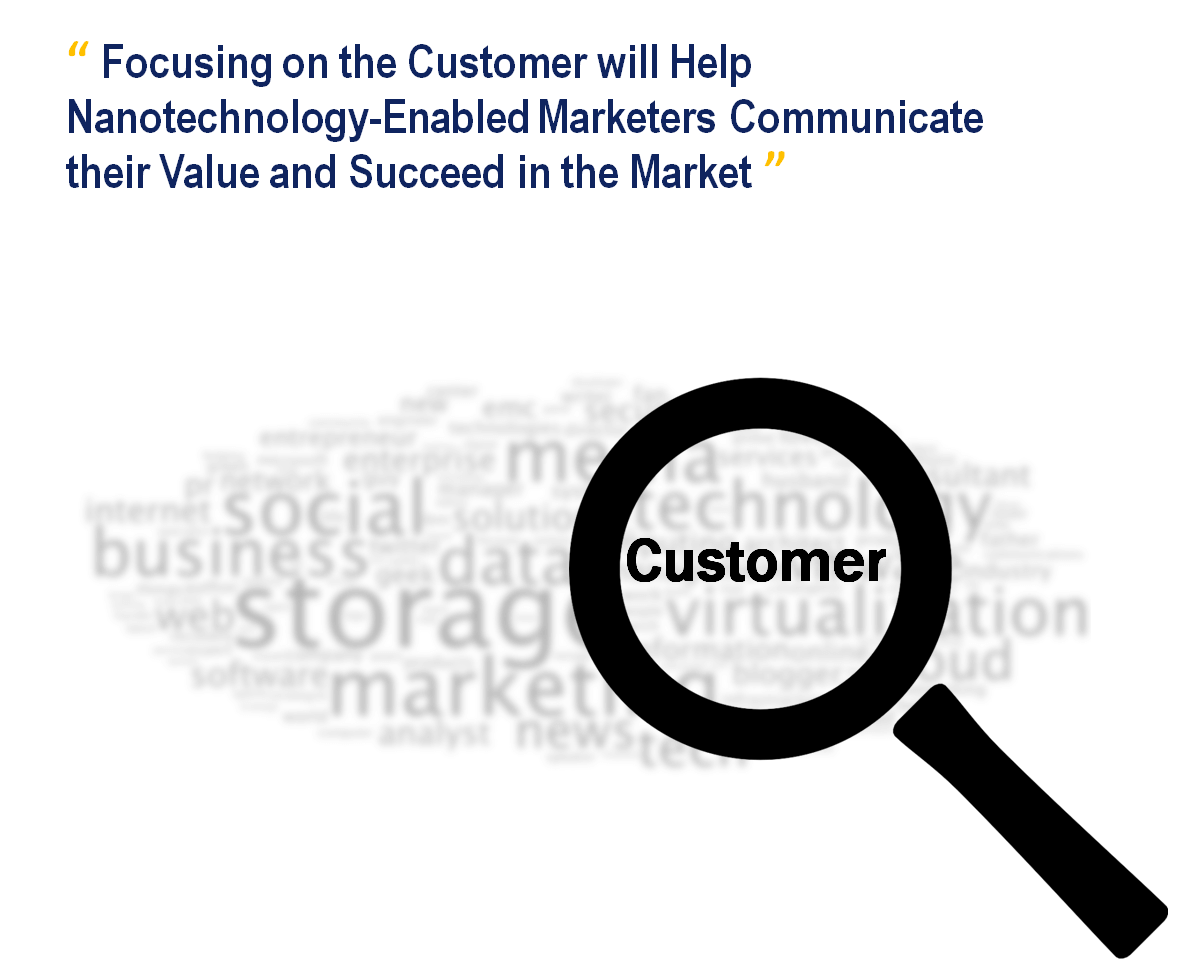Robert Ferris continues his nanotechnology series with a look at communicating the benefits.

Robert Ferris, Ph.D.
Strategic Planner
Nanotechnology has already improved products we use today. Energy harvesting is extending wireless battery life, communication speeds are getting faster, and coatings are lasting longer. Unfortunately, many more companies fail to gain traction in the marketplace. While companies and products can miss growth targets for any number of reasons, one of the more common failures for nanotechnology-enabled products is improper marketing. Most would agree that marketing is as much art as science but marketing of nanotechnology-enabled products can be particularly tricky.
Developing a nanotechnology product requires a lot of time, effort, and innovation. After spending countless hours, dollars, and late nights building a game-changing product, many companies are excited and anticipate customers to mirror their excitement. Unfortunately, rarely is this the case. Instead, customers need to see how this new product serves their needs.
 Many nanotechnology-focused marketers learn this lesson too late, or not at all, and fail to gain sales traction. Integrating nanotechnology-enabled products into your plant or process can offer benefits like decrease maintenance costs, increase production, or improve safety. But before purchasing a nanotechnology-enabled product, you have to understand how that product meets your needs. Here, we discuss how companies fail to reach their customers and offer a better way to communicating the value proposition.
Many nanotechnology-focused marketers learn this lesson too late, or not at all, and fail to gain sales traction. Integrating nanotechnology-enabled products into your plant or process can offer benefits like decrease maintenance costs, increase production, or improve safety. But before purchasing a nanotechnology-enabled product, you have to understand how that product meets your needs. Here, we discuss how companies fail to reach their customers and offer a better way to communicating the value proposition.
Companies that develop nanotechnology-enabled products tend to fall into two camps—those that use nanotechnology as a differentiator in their marketing materials and those that do not. In the 5 P’s of marketing (Product, Place, Price, Promotion, and People), we are contrasting how each company approaches product marketing.
Product marketing focuses on communicating how that product meets a customer need. To do this, the marketing material must differentiate from other potential solutions. The question is, does nanotechnology serves as a differentiating value proposition for the customer?
Let’s use an example to illustrate this point. Let’s say someone comes to you with a brand-new process control valve. The valve company worked for years developing the nano-manufacturing techniques to deliver a valve lining that is more resistant to corrosion and allows for improved flow characteristics.
A local salesperson calls you up to see what you think. As a customer, you ask a simple question, “Why should we buy this new valve over the one we have been using for years?” What will you think if the sales-person answers, “Because it is based on nanotechnology!”? Answering this way does not address your pain points or satisfy your concerns over the risks of purchasing a new product.
Nanotechnology is not a value proposition. By this, I mean that the use of nanotechnology does not inevitably mean that the nanotechnology-enabled product is better or that you will automatically buy it. Nanotechnology is only a means to access differentiated products that may better serve your customers.
To complete this valve example, the salesperson should have responded by noting the estimated savings by extending time between turnarounds and backing that up with the extensive testing performed. An answer like this addresses your perception of risk, just as you would have to do with any new product introduction. Unfortunately, this point is usually lost with nanotechnology-enabled product introductions and as a result, customers are not convinced to buy.
Sales growth trends further support this approach to marketing of nanotechnology-enabled products. More often, suppliers find improved customer receptivity when they focus on the value delivered by the innovation. The most successful nanotechnology-based product suppliers don’t even put the word “nanotechnology” in their communications.
For example, L’Oreal is a cosmetics company and can be argued as the kings of marketing. Few people know, however, that L’Oreal uses nanoparticles in their creams. Scanning their marketing material, you find that they focus on improved color, longer-lasting lipstick, and smoother creams.
Why? Because that is what the customer needs to hear before buying their product. In fact, L’Oreal invested over $920M into nanotechnology research in 2011 and sold €5.5B in Q3 of 2013. Another example is View Glass, a company that uses a nanofilm-coated glass for self-tinting windows. View was previously called Soladigm, but since changing their name, website, and marketing materials closed a $60M financing round with Corning Glass.
Developing a nanotechnology-enabled product does not mean the product is automatically better. You may have heard of failed companies like A123 Systems, Nanosolar, or Solyndra. For every nanotechnology-enabled product, you have heard of there are thousands more that you have not.
And for good reason! A lot of times the nanotechnology-enabled product fails for a number of reasons, including:
- The product does not provide enough value for a customer to buy it
- The new product provides value to the wrong consumer
- It cannot be produced affordably at commercial scale
- It causes more harm than good, or
- It just flat-out does not work.
If you are able to overcome these hurdles only to fail reach customers is a tough lesson that comes only after investing so much time and money.
Marketers of nanotechnology-enabled products need to focus on their customer. Focusing on key product benefits better communicate the value the technology brings and the buying decision criteria of the end user. Nanotechnologies enable game-changing products, but when it comes time to sell the technology is no longer important, only the problems it helps to solve for the end user is.
Stay tuned: My next post will discuss the nanotechnology regulatory environment and the effect on nanotechnology innovation.
Please, share your opinion or questions! Reply below to provide your thoughts, insights, or comments with the experts.
Robert Ferris, Ph.D. is a strategic planner with Emerson Process Managements. He holds a bachelors and masters in chemical engineering, an MBA in new technology commercialization, and a Ph.D. in Mechanical Engineering and Materials Science. He has an extensive background in nanotechnology development and advanced process control.




